Old European culture: Archangel Michael (nadesłał Jarosław Ornicz)
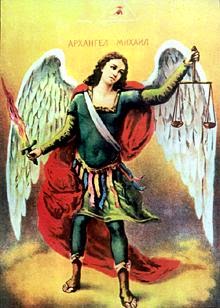
Archangel Michael
This is Archangel Michael, my family saint. He is celebrated today on 21st of November. I wish all people who celebrate Archangel Michael (Srećna Slava) Happy Slava.
http://oldeuropeanculture.blogspot.com/2016/11/archangel-michael.html
But who is really Archangel Michael?
If we look at the Bible we find that it has this to say about Archangel Michael:
Genesis 3
„{3:24}And in front of the Paradise of enjoyment, he placed the Cherubim with a flaming sword, turning together, to guard the way to the tree of life.”
1 Chronicles 21
„{21:16} And David lifting up his eyes, saw the angel of the Lord standing between heaven and earth, with a drawn sword in his hand, turned against Jerusalem: and both he and the ancients clothed in haircloth, fell down flat on the ground.”
„{21:30} And David could not go to the altar there to pray to God: for he was seized with an exceeding great fear, seeing the sword of the angel of the Lord.”
Who is Archangel Michael? The Archangel Michael is the closest to the Lord in the Jewish scriptures, for his very name means „Who is like God.” As the eldest Archangel, he is given captaincy of all of God’s natural phenomena, including rain, wind, fire, snow, thunder, lightning, and hail. Michael is believed by many Jews to have appeared to Moses as the fire in the burning bush and to have led Daniel from the lions’ den. Additionally, because it is said in the Book of Revelations that Michael will lead God’s troops against the dragon and his angels at the final battle, many people seek the aid of Michael against wrong-doers on Earth
The archangel who controls the rain, fire, thunder, lightning and who punished the wrong-doers. Is this a description of Perun? The Archangel with a flaming sword who stands between Heaven and Earth guarding the heaven and pointing his flaming sword towards the earth. Is this a description of lightning? Is the lightning the flaming sword of the lord?

In my post about „Ognjena Marija” I explained that in Slavic mythology, Ognjena Marija or the „Fiery Mary” is considered to be the sister of St Ilija, the thundering sun and (or) wife of the thunder god Perun, who is just another name for Ilija, Ilios, Sun god, another face of Sun god. She is also known as Perunika, Perena, Ljeljuja, Leluja, Ljelja, Gorka, Veronika. Later, under Christianity, her importance was degraded and she was regarded as an evil goddess, described as an evil and ugly woman named Irudika (who was in turn a daughter of Poganica).
In Medjimurje (northern Croatia), one greeting used on the feast day of St. Stephen (Dec. 26) mentions God with lelulja (ljeljuja), i.e. perunika, in his hand. This is the most probable origin of the alternative Perunika’s name Ljelja. But also this could indicate that the true meaning of Perunika is actually lightning, electricity, the spark of life. Perunika, the wife of Perun, symbolized by flower Perunika, is the essence of his power, Electricity, Lightning.
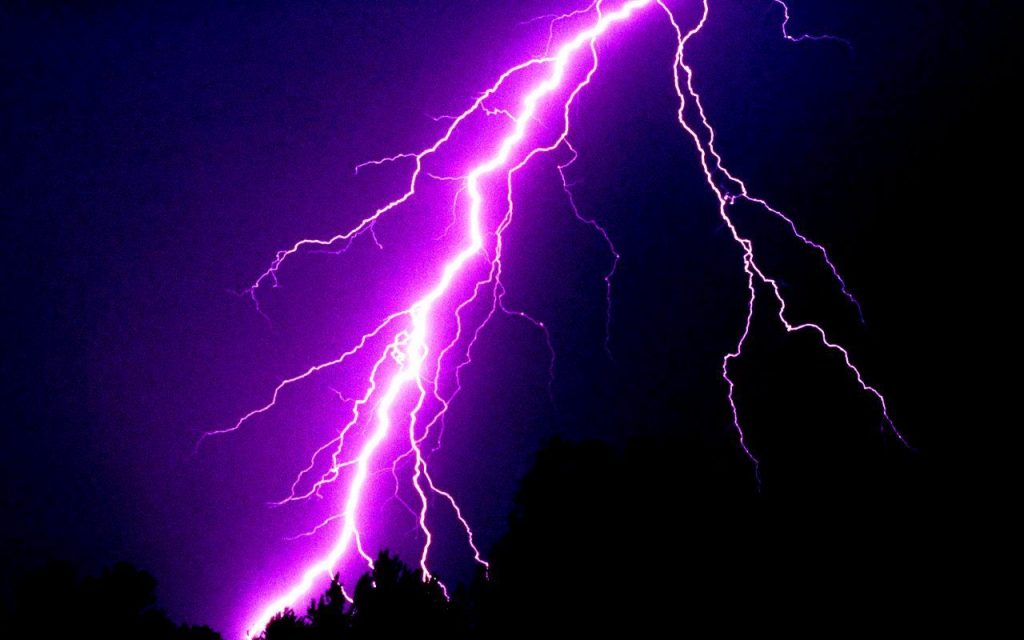
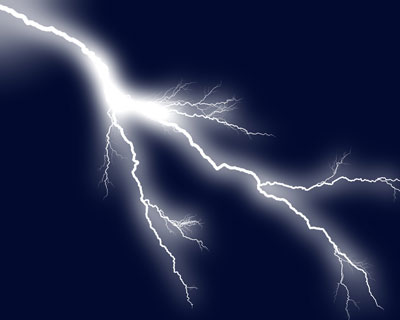
In the same way Indrani is the wife and essence of the power of Indra, and Shakti is wife and essence of the power of Shiva.
Perun holding Perunika is Shiva holding Trishula, Lightning.
And guess what? Iris (Perunika) has the petals of the same color as lightning, blue – purple laced with lightning like golden pattern. It also has three main petals.
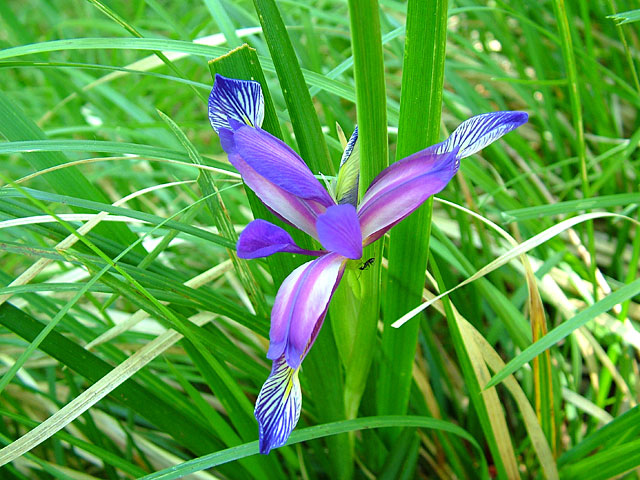
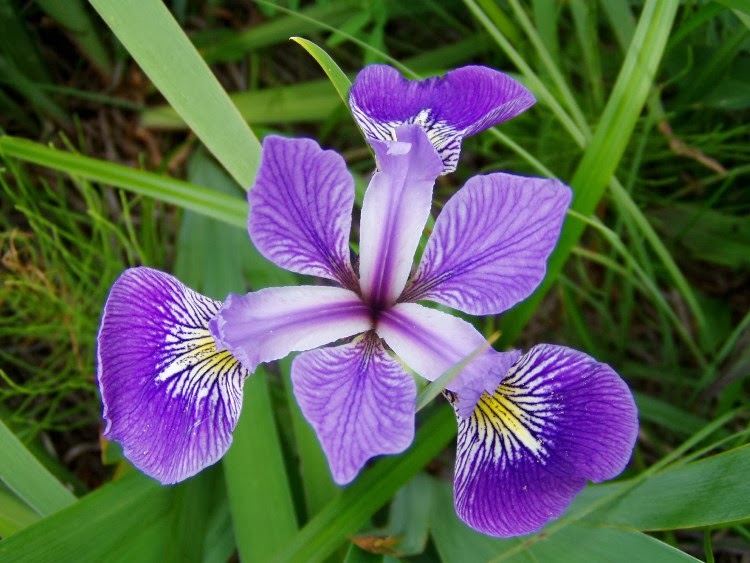
Just like trishula has three spikes:
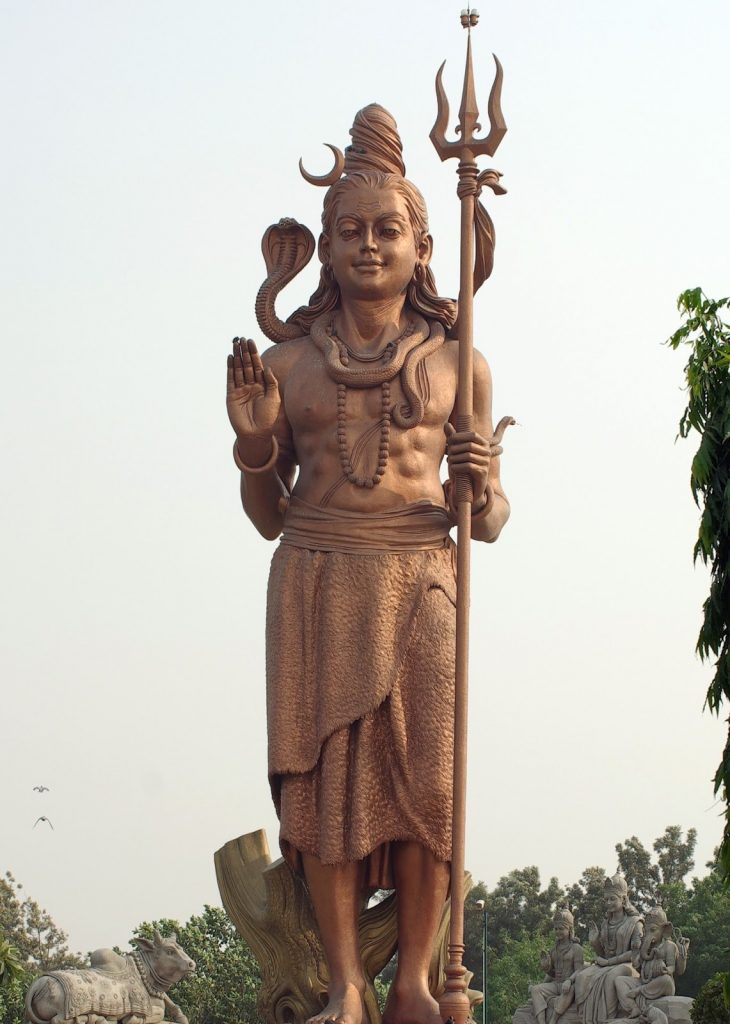
This Russian „Christian” icon depicts Ognjena Marija or the „Fiery Mary” surrounded with fiery wheels of Perun, inside the burning flame.
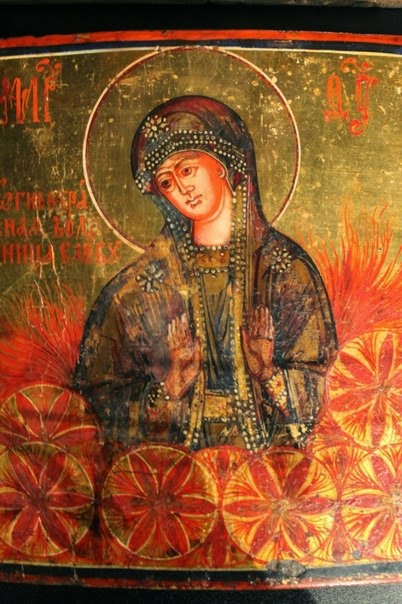
The fiery wheels of Perun, the Thunder god, are actually burning sun wheels of Svetovid, the Sun god. In South Slavic folk tradition the day of Perun is the 2nd of August, the Crom Dubh day in Ireland. But this day is also the day of St Ilija the Thunderer. St Ilija the Thunderer is Ilios, the thundering sun, the sun at its hottest, the sun that burns with its fiery eye. In Serbian tradition the rolling thunders which can be heard around the 2nd of August are said to be made by the fiery wheels of St Ilia’s chariots thundering over the tops of the clouds, and the lightning that is seen flashing in the clouds are the sparks created by those same fiery chariot wheels.
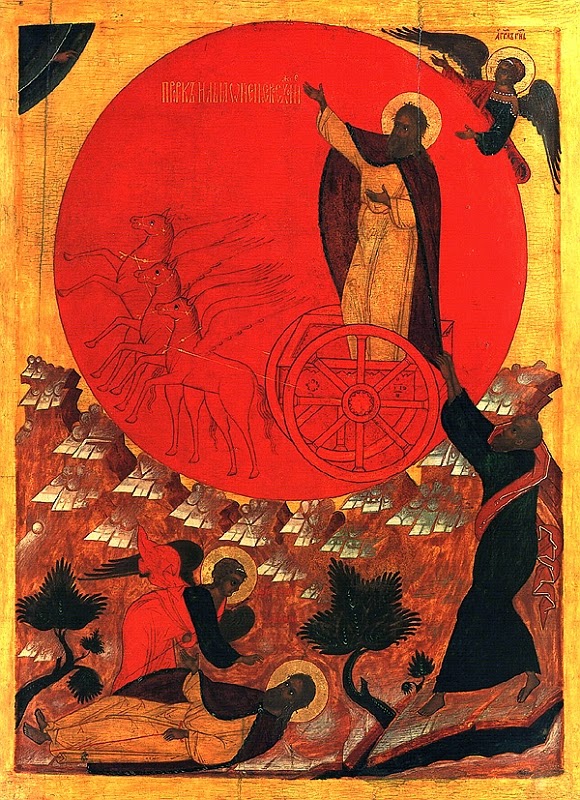
This basically means that the sun wheel of Svetovid is thunder wheel of Perun. Sun creates, gives power to lightning, which is exactly what the latest scientific data is telling us: Solar radiation and lightning are intrinsically linked.
Now remember, Michael „is like God”. And so is Perun. Perun is like Svetovid. Perun is Ilija the Thunderer, who is Thundering sun Ilios. In my post about Triglav, Trimurti I wrote that
The book of Veles has this riddle:
Jer tajna je velika, kako to Svarog biva u isto vreme i Perun i Svetovid.
Translated into English this means:
Because it is a great secret how come Svarog (hevenly and earthly fire) is at the same time Perun (thunder) and Svetovid (Sun).
And the answer to this riddle is Triglav, Trimurti. Svetovid (sun), Perun (thunder and lightning) and Svarog (Jarilo, fire) are three faces of one and only god Triglav.

Perun is „like” Svetovid and this is depicted through the symbols of Svetovid and Perun: their wheels. The wheel of Perun is „like” the wheel of Svetovid. It is actually the fiery version of the wheel of Svetovid. Sun creating fire through lightning.

Now if Michael is „Like El”, is Michael actually Perun, who is „Like Svetovid”?
In Indian mythology, Trimurti consists of Vishnu, Shiva, and Brahma. In Serbian mythology, Triglav (Svetovid, Perun, Svarog (Jarilo)) consists of Višnji, Živa, Branjanj.
In Serbian the meanings of the names of the holy trinity (Trimurti, Triglav) members (Višnji, Živa, Branjanj) actually correspond to their role in Serbian Trinity:
Vishnji (meaning „one who is up high”, from vis „high”), the sun (Svetovid).
Branjanj (meaning the protector, supporter, from bran „protection”, braniti „to protect”), the fire (Svarog, Jarilo).
Živa (meaning alive, living from Živ „alive, life”), the giver and taker of life (Perun).
In Serbian the word „Živ” means Alive and the word „Život” means Life. The tree of Life in Serbian is „Drvo Života”. And Michael is guarding the access to the tree of Life (Život). Is this just a coincidence or is this a hint that Michael is Živa – Perun, the electricity part of the holy trinity? And as we know now, electricity is what powers all the life in the universe….
So Joshua worshiped Michael (the fiery sword of god) like God. Michael who is „Like God, Closest to God”. Serbs worshiped Perun (the lightning which causes fire and destruction) like God, the god of warriors.
What is amazing is that when asked whose side he is on, Michael answers „neither”. This is exact description of the nature of lightning. It is not on the side of heaven nor it is on the side of the earth. It is in between connected to both heaven and earth.
więcej: http://oldeuropeanculture.blogspot.com/2016/11/archangel-michael.html
*
Mail od Jarosława Ornicza:
